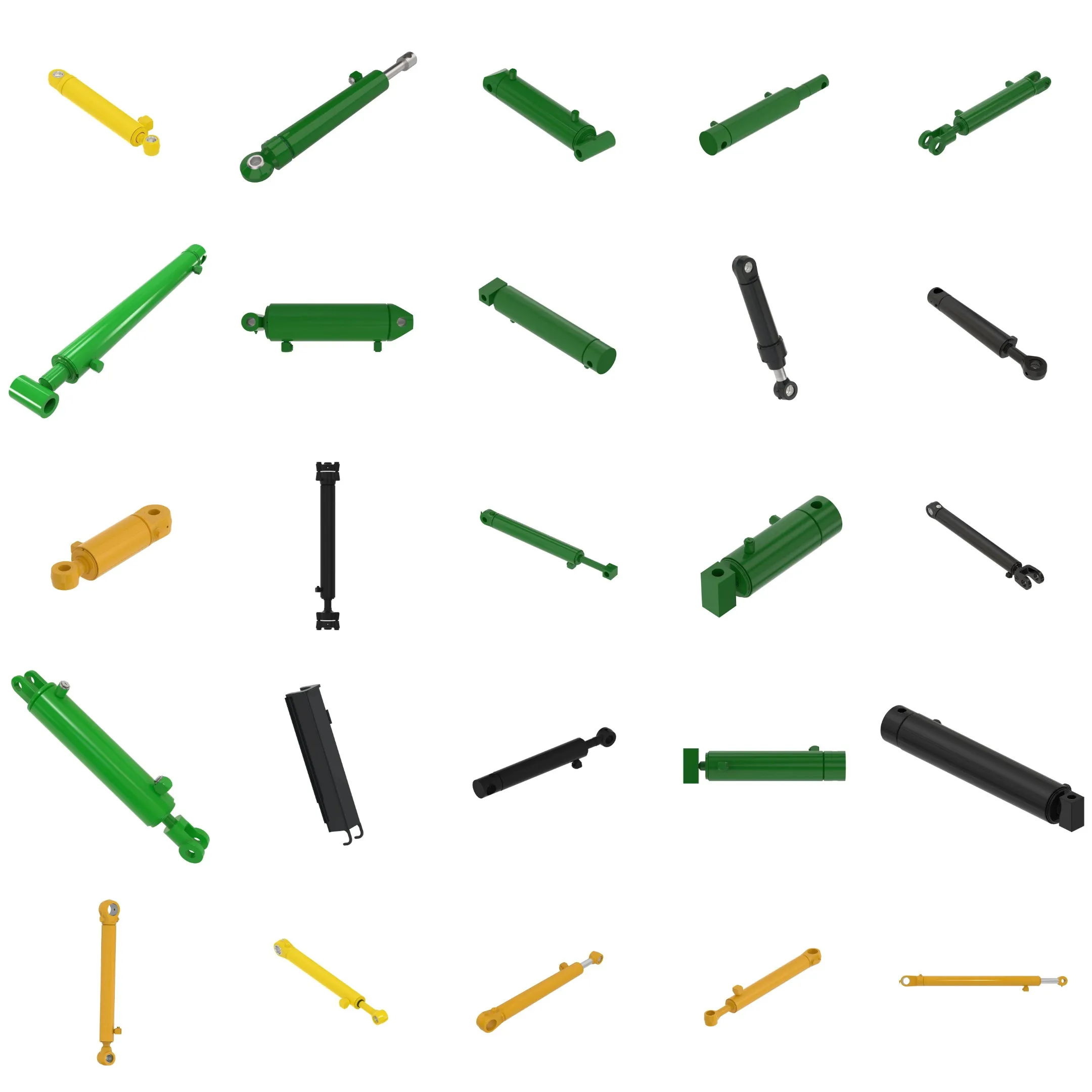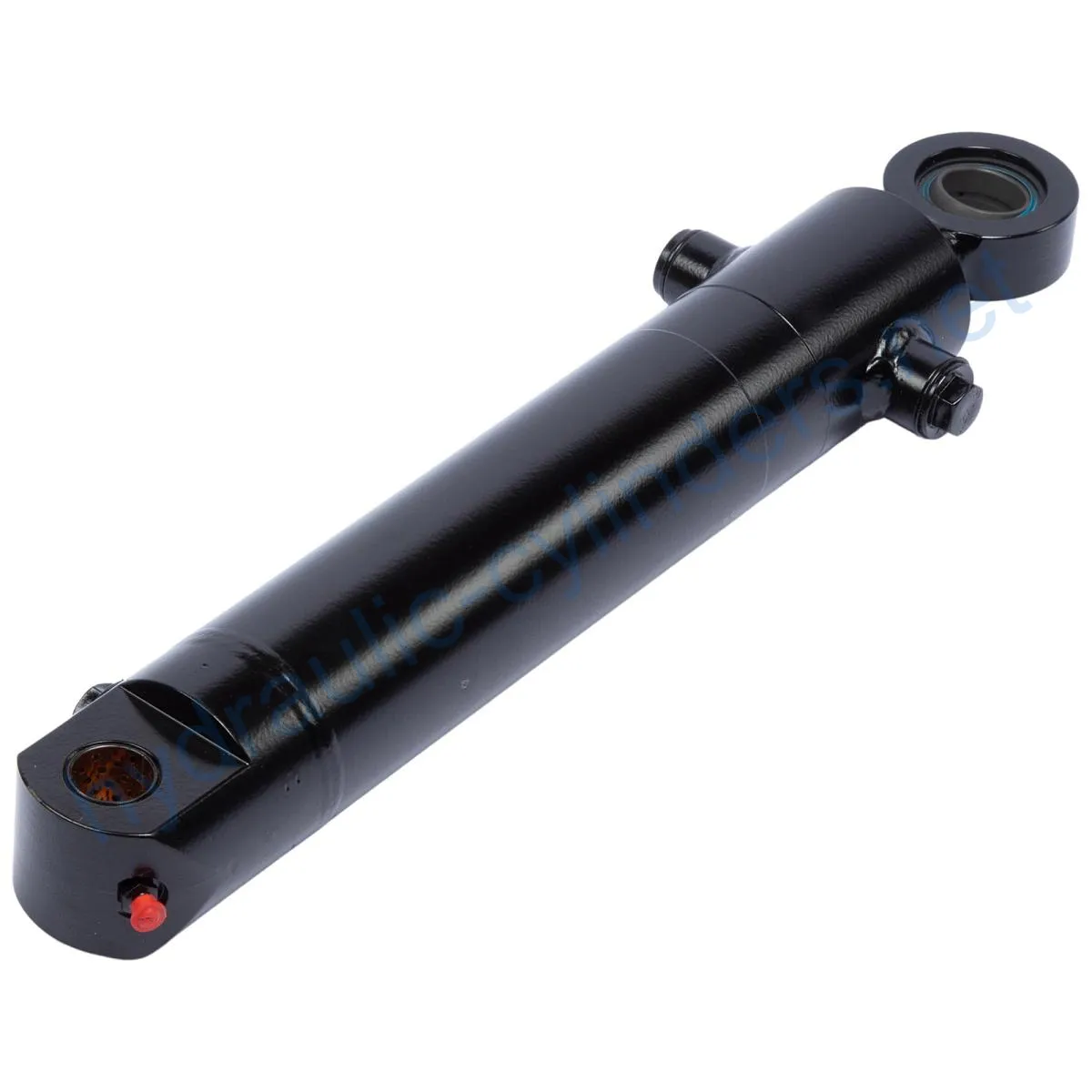Replacement Of F687303 Hydraulic Cylinder
Mint a hidraulikus hengerek egyik gyártója, szállítója és exportőre a mechanikai termékek, kínálunk hidraulikus hengerek és sok más termék.
Kérjük, lépjen kapcsolatba velünk a részletekért.
Posta:sales@hydraulic-cylinders.net
Hidraulikus hengerek gyártója, szállítója és exportőre.
Replacement Of F687303 Hydraulic Cylinder
Product Introduction
The Replacement Of F687303 Hydraulic Cylinder is a type of hydraulic cylinder that serves as a replacement part for various hydraulic systems. The hydraulic cylinder is a mechanical actuator that is used to provide unidirectional force through a unidirectional stroke. It consists of a cylindrical barrel, piston, and piston rod that work together to transfer force through fluid. The hydraulic cylinder is used in many applications, including construction equipment, agricultural machinery, and manufacturing systems.
Specifications and Models
The Replacement Of F687303 Hydraulic Cylinder has a weight of 21.64 lb, a height of 3.5 in, a width of 5.5 in, and a length of 21.5 in. It is compatible with various models of hydraulic systems.
Product Features
Improved Equipment Performance
Replacing damaged or worn hydraulic cylinders can restore the normal operating ability of equipment, ensuring its performance in various applications.
Enhanced Safety
Regularly replacing hydraulic cylinders can reduce safety hazards caused by cylinder failure, ensuring the safety of operators and equipment.
Overload Protection
New cylinder designs usually consider better overload protection mechanisms, improving safety.
Quick Installation
Modern hydraulic cylinder designs usually consider ease of installation and replacement, reducing downtime.
Standardized Components
Many hydraulic cylinders are standardized products, making it easy to obtain replacement parts in the market.
Our company is capable of producing this product, and our product can perfectly replace these hydraulic cylinders.
Applications
The Replacement Of F687303 Hydraulic Cylinder can be used in various applications, including:
Excavators
The hydraulic cylinder may be damaged due to long-term use or overload in the arm or bucket of the excavator and needs to be replaced to restore normal operation.
Cranes
The crane’s boom hydraulic cylinder is prone to wear during frequent lifting and lowering and needs to be regularly replaced to ensure safety.
Tractors
The hydraulic cylinder of the front loader of the tractor may leak or perform poorly during continuous lifting and tilting operations, and needs to be replaced.
Harvesters
The hydraulic system undergoes high-pressure during the harvesting process, and the cylinder may be damaged due to fatigue, requiring timely replacement to maintain work efficiency.
Automated Production Lines
Hydraulic cylinders are used to control robotic arms and other automated equipment. If the cylinder fails, it will affect production efficiency and needs to be replaced immediately.
Die-Casting Machines
Hydraulic cylinders may experience performance degradation in high-pressure and high-temperature environments, and regular replacement can ensure product quality.
Mining Equipment
Hydraulic cylinders are used to lift and move heavy objects in mining equipment. Due to harsh working environments, they need to be inspected and replaced regularly to avoid equipment failure.
Bulldozers
The wear of the hydraulic cylinder on the bulldozer’s push arm will cause a decrease in pushing capacity, and it needs to be replaced in a timely manner to maintain work efficiency.
Karbantartás
Regular maintenance is crucial for the longevity and proper functioning of hydraulic cylinders. Three common maintenance tasks are:
Regular Inspection
Inspect the hydraulic cylinder regularly to identify any leakage or damage. Early detection of problems can help prevent serious malfunctions.
Proper Lubrication
Use the appropriate amount of hydraulic oil for lubrication, and periodically check the oil level to ensure the cylinder is lubricated regularly.
Seal Replacement and Calibration Check
Replace the seals regularly to prevent leakage, and check the calibration of the cylinder to ensure it is functioning correctly. Proper installation, lubrication, and adjustment are essential to ensuring that the cylinder operates efficiently and safely.
Safety and Environmental Considerations
Safety measures are essential when working with hydraulic cylinders. Failure to follow proper safety protocols can result in serious injury or death. Additionally, hydraulic cylinders must be disposed of properly to prevent environmental damage. Always follow the manufacturer’s instructions for proper handling, use, and disposal of hydraulic cylinders.
Troubleshooting and Common Problems
Common problems with hydraulic cylinders include leakage, piston rod damage, and cylinder barrel damage. To diagnose and solve these problems:
Leakage
Check the seals and replace them if necessary. Also, check the hydraulic pressure, as excess pressure can cause leakage.
Piston Rod Damage
If the piston rod is damaged, it can cause the cylinder to malfunction. Replace the piston rod with a new one to restore normal operation.
Cylinder Barrel Damage
If the cylinder barrel is damaged, it can cause leakage or prevent the cylinder from functioning properly. Replace the cylinder barrel with a new one to restore normal operation.
Preventive measures include regular maintenance, proper usage, and monitoring of the hydraulic cylinder to prevent potential problems.

Product Design and Selection Criteria
The design of hydraulic cylinders must consider their load-bearing capacity, sealing, durability, safety, and maintainability. Key points to consider include:
Load-Bearing Capacity
The hydraulic cylinder must be able to withstand the loads and pressures exerted during operation.
Sealing
Good sealing prevents leakage and ensures proper operation.
Durability
The hydraulic cylinder must be durable and able to withstand harsh working conditions.
Safety
The hydraulic cylinder must be safe to use and minimize the risk of injury.
Maintainability
The hydraulic cylinder must be easy to maintain and repair to minimize downtime.
Seals should be made of wear-resistant materials such as polyurethane or nitrile rubber, and the cylinder body and threaded end surface should be finely processed to improve wear resistance. Proper lubrication and periodic inspection are also essential for the proper functioning of the hydraulic cylinder.
Proper Installation Guidelines
Correct installation is essential to ensure that the hydraulic cylinder operates efficiently and safely. Follow these guidelines:
- Ensure that the cylinder is properly oriented and aligned.
- Use appropriate installation brackets to secure the cylinder in place.
- Follow recommended inspection, repair, and replacement procedures.
- Use replacement parts and rebuilding services to extend the life of the cylinder.
- Provide proper training to operators to reduce the risk of injury or damage to the cylinder.

About Our Company
We are a manufacturer of replacement hydraulic cylinders, offering a complete range of products and becoming one of the leading manufacturers and wholesale distributors of hydraulic cylinders in domestic and international markets. Our company’s strengths include:
- Professionalism and expertise in the production of hydraulic cylinders.
- International certifications and standards for quality assurance.
- Customization services tailored to meet specific customer needs.
- Advanced production equipment to ensure high quality and efficiency.
- After-sales service and support to ensure customer satisfaction.
Our commitment to quality and customer satisfaction has made us a trusted source for hydraulic cylinders.
Author: lyl
Take a Tour of Our VR Factory:
Take a tour of our VR factory with the following
Hydraulic Cylinder Application:


